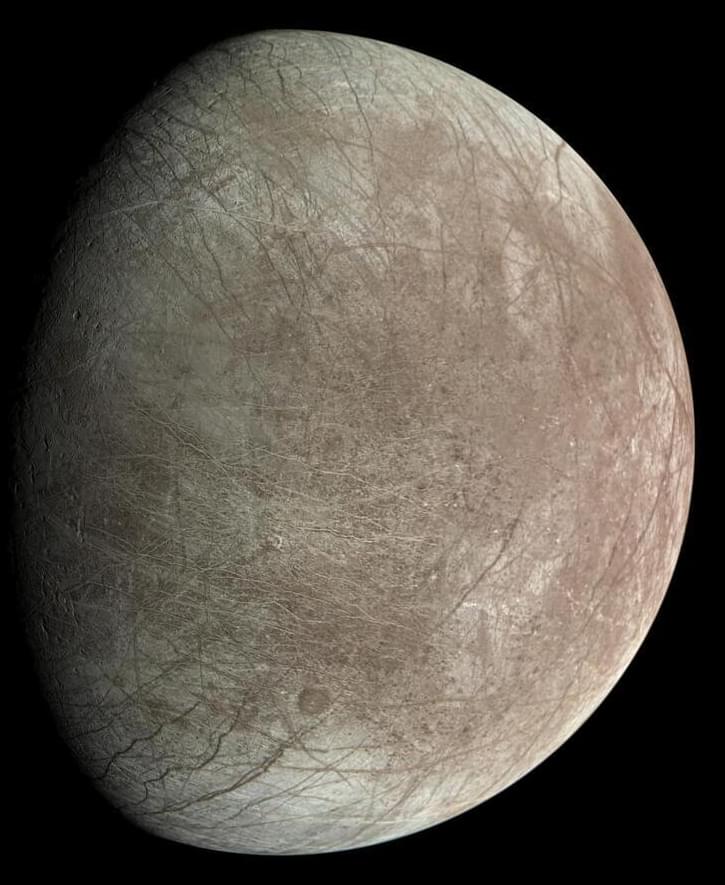Jupiter’s moon, Europa, has long been hypothesized to contain a vast, liquid water ocean beneath its icy crust. But has this crust remained stationary, or has it moved over millions of years since it could be separated from the ocean below? This is what two recent studies published in The Planetary Science Journal and JGR Planets hope to address as high-resolution images from NASA’s Juno spacecraft revealed some unique surface features on the small moon. These images and studies hold the potential to help scientists better understand what they refer to as “true polar wander” on Europa, which is a hypothesis stating that Europa’s outer icy shell moves freely since it’s allegedly detached from the ocean underneath.
“True polar wander occurs if Europa’s icy shell is decoupled from its rocky interior, resulting in high stress levels on the shell, which lead to predictable fracture patterns,” said Dr. Candy Hansen, who is a co-investigator on Juno, along with being lead author of The Planetary Science Journal study and a co-author on the JGR Planets study. “This is the first time that these fracture patterns have been mapped in the southern hemisphere, suggesting that true polar wander’s effect on Europa’s surface geology is more extensive than previously identified.”
